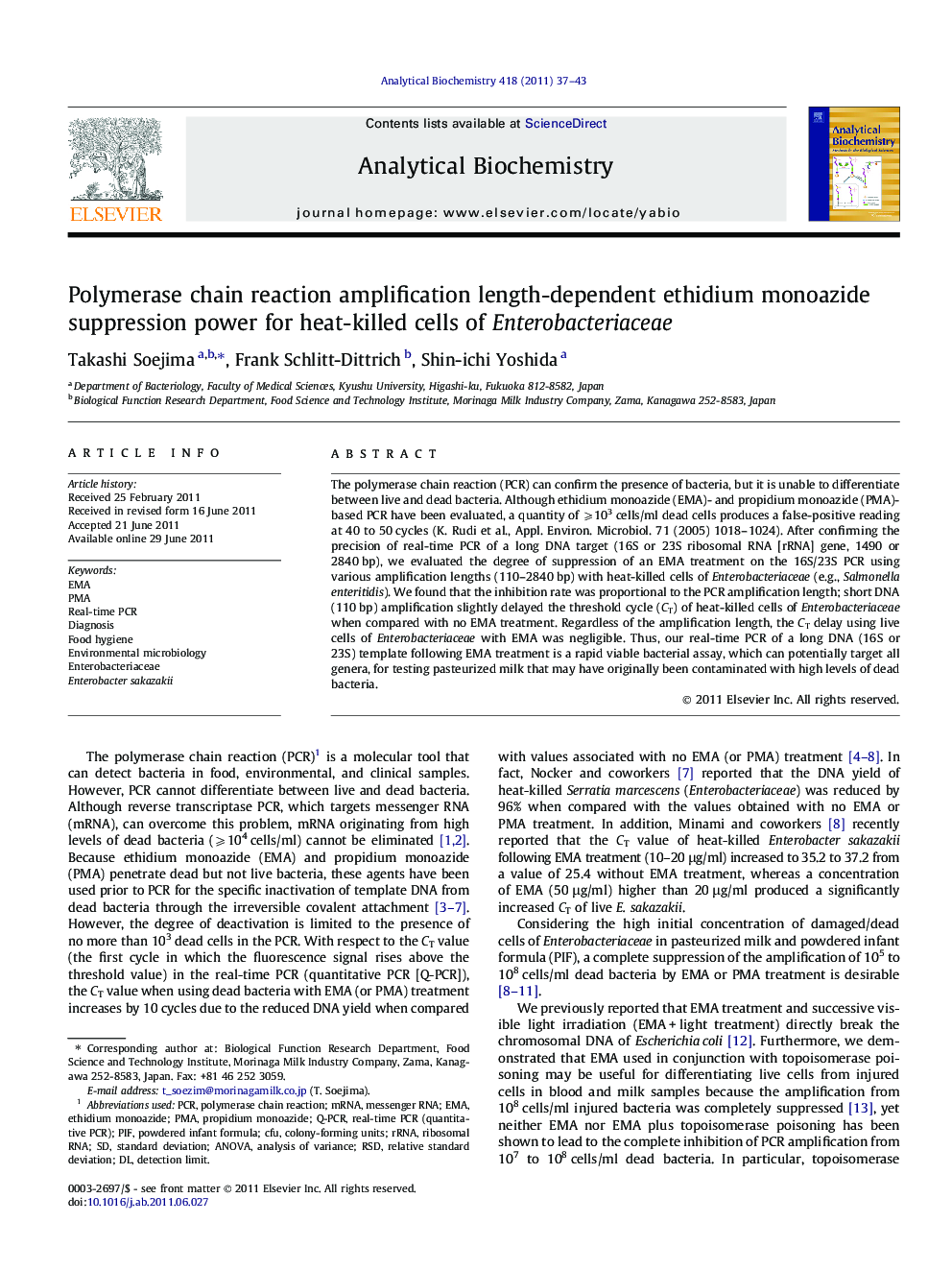| Article ID | Journal | Published Year | Pages | File Type |
|---|---|---|---|---|
| 10532622 | Analytical Biochemistry | 2011 | 7 Pages |
Abstract
The polymerase chain reaction (PCR) can confirm the presence of bacteria, but it is unable to differentiate between live and dead bacteria. Although ethidium monoazide (EMA)- and propidium monoazide (PMA)-based PCR have been evaluated, a quantity of ⩾103 cells/ml dead cells produces a false-positive reading at 40 to 50 cycles (K. Rudi et al., Appl. Environ. Microbiol. 71 (2005) 1018-1024). After confirming the precision of real-time PCR of a long DNA target (16S or 23S ribosomal RNA [rRNA] gene, 1490 or 2840 bp), we evaluated the degree of suppression of an EMA treatment on the 16S/23S PCR using various amplification lengths (110-2840 bp) with heat-killed cells of Enterobacteriaceae (e.g., Salmonella enteritidis). We found that the inhibition rate was proportional to the PCR amplification length; short DNA (110 bp) amplification slightly delayed the threshold cycle (CT) of heat-killed cells of Enterobacteriaceae when compared with no EMA treatment. Regardless of the amplification length, the CT delay using live cells of Enterobacteriaceae with EMA was negligible. Thus, our real-time PCR of a long DNA (16S or 23S) template following EMA treatment is a rapid viable bacterial assay, which can potentially target all genera, for testing pasteurized milk that may have originally been contaminated with high levels of dead bacteria.
Keywords
Related Topics
Physical Sciences and Engineering
Chemistry
Analytical Chemistry
Authors
Takashi Soejima, Frank Schlitt-Dittrich, Shin-ichi Yoshida,
